Living in the deep sea
Our lack of knowledge about the deep seas is immense, almost as great as the surface area of these regions. To begin to understand this other world and its mysteries, we must take certain facts into consideration:
The average depth of the oceans is about 3,800 metres (almost 12 times the height of the Eiffel Tower). The vast majority of marine sampling and dives by scuba divers barely scratch the “skin” of the sea.
With the exception of the narrow underwater continental shelf that extends from the coast to a few kilometres offshore, the rest, more than 95% of the oceans, is more than 200 metres deep.
The deepest point in any ocean is in the Mariana Trench, the so-called Challenger Deep, which reaches a depth of almost 11 kilometres below sea level.
Animals of the deep sea
From 200 metres down, except in areas of very clear water, the light disappears and we enter a world of total darkness.
As no light enters, no photosynthetic organisms can survive. In other words, there are no plants, algae, phytoplankton or other organisms that photosynthesise. It is therefore the domain of animals, particularly those that attach themselves to the seabed and play similar roles to terrestrial plants, forming forests and structures that provide shelter, sustenance, food and reproductive opportunities for many other species. Corals and sponges are often among the most common and important of these habitat-forming animals.
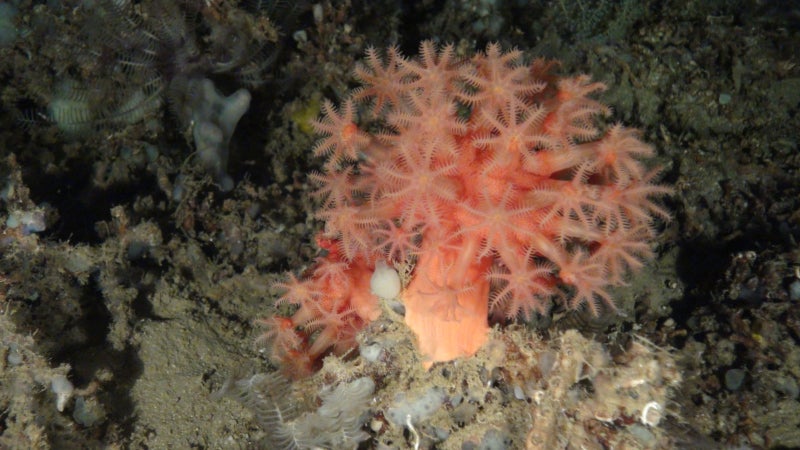
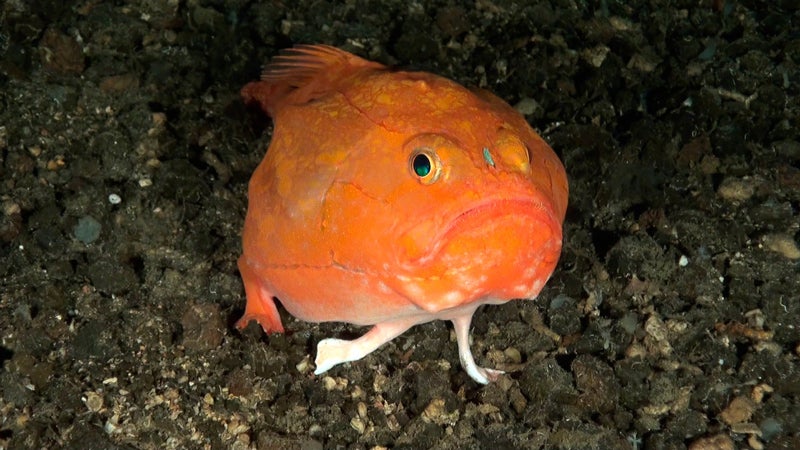
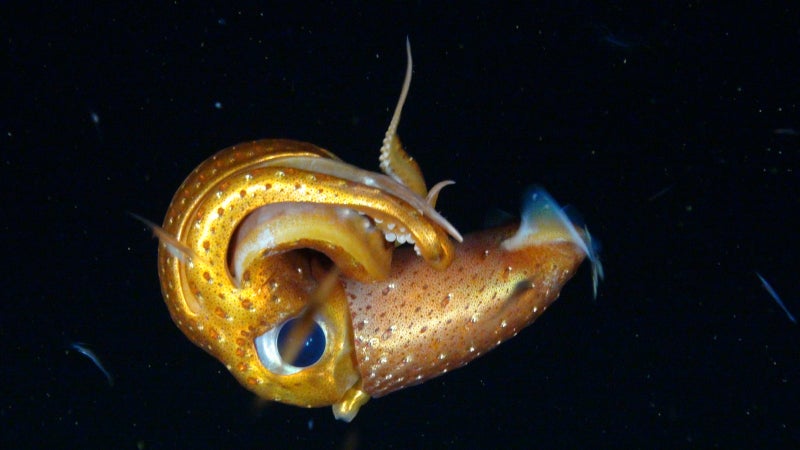
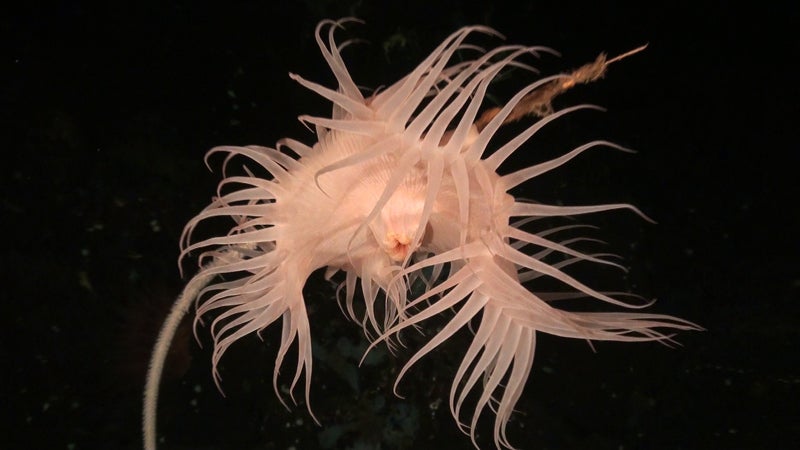

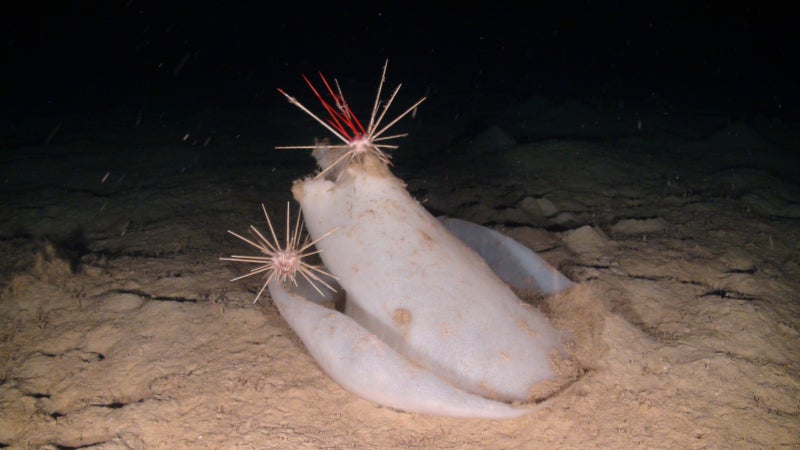
Cold and a lack of oxygen
If there is no light, the sun’s heating capacity is also reduced, so temperatures are often close to freezing. From 150 metres down, it is rarely more than 10-15°C , even in tropical waters. It is not uncommon at these depths to be as low as 5° or 6°C. In some very deep areas the temperatures even drop below 0°C, thanks to the higher density and salinity that prevents the water from freezing.
In general, the density of oxygen in water is much lower than in air (7-8 mg/l in seawater, compared to 210 mg/l in the atmosphere we breathe). Since oxygen penetrates and dissolves in the surface layers of the sea, it is in this zone that we find the greatest amount of O2, while the deeper we go, the less O2 arrives, creating a low-dissolution zone that extends from 100 to almost 1,000 metres deep.
But from this point on, the opposite situation occurs. The cold waters of the deeps are richer in oxygen. This is due to marine circulation, whereby the cold, oxygen-rich polar waters sink and, via ocean currents, are distributed to all of the planet’s deep seabed.
Ocean currents are not only found at the surface. Large movements of water masses occur at all depths. Some of them travel thousands of kilometres and can carry cold water from the Antarctic to European waters, or Arctic waters to the tropics. This is also a major contributor to the low temperature of the deep sea.
Fauna under pressure
Water pressure increases by one atmosphere for every 10 metres descended, meaning that at just 10 metres deep we would have to withstand a pressure of one kilogram per centimetre of our body. At 1,000 metres, this would be 100 kilos per centimetre, and so on down to the deepest areas.
However, this pressure seems to have little effect on marine species living at different depths. The greatest impact occurs when they change pressure/depth, which can rupture the bodies of these species.
For animals to move between different depths, the most important thing for them is not to have large quantities of gases in their bodies, not oxygen, carbon dioxide or any others that could expand or contract, causing damage to their metabolism and body structure.
Another characteristic of these waters is the increased dispersion of organisms, with large areas having a low density of organisms, reducing the ability to find mates as well as prey. This particularly applies to the water column, as corals, sponges, bryozoans and other marine organisms can be present in impressive densities over large expanses of the seabed.
From twilight to total darkness
The ocean is divided into several levels, depending on the range of depths:
- The area between 200 and 1,000 metres deep is known as the mesopelagic or twilight zone. This zone is strongly influenced by what happens above and by the vertical migrations of plankton, so that many species here travel across a wide bathymetric range.
- The bathyal zone is found between depths of 1,000 and 4,000 metres.
- From depths of 4,000 to 6,000 metres we find the abyssal zone.
- From here to the deepest depths is the hadal zone.
But when we talk about the seabed, we use the term bathyal to refer to places where light does not penetrate or, if it does, it is of such low intensity that it does not allow photosynthesis to take place. This tends to occur below a depth of 200 metres and is where there is a radical change in the dominant species.
On Oceana expeditions, we work with ROVs (remotely operated vehicles) that travel down to 1,000 metres below the surface. This allows us to explore the deep waters of the Atlantic and the Mediterranean and to propose measures to preserve deep-sea ecosystems, which are often neglected.

